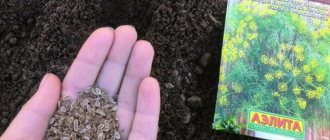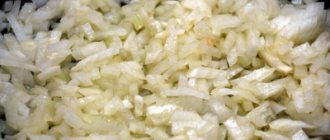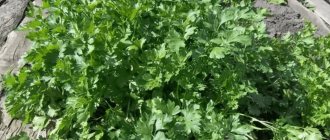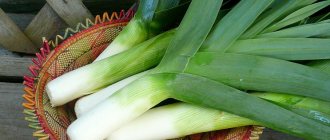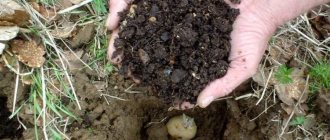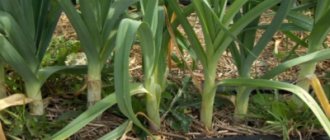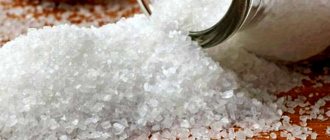Is it possible to leave leeks in the ground for the winter?
You can and even need to leave leeks in the garden in the following cases:
- You need to collect the seeds of your favorite variety yourself. The crop is biennial; in the first year, the onion increases its vegetative mass, and in the second it produces shoots with seeds.
- The desire to collect fresh, juicy greens from your plot in early spring. When stored in a cellar or basement, leeks lose most of their taste.
- There is no way to store the harvest harvested in the fall.
You should not leave leeks in the garden before winter:
- if you live in climatic conditions with frosty winters and little snow, the onions will freeze;
- if early varieties unsuitable for wintering under snow or non-frost-resistant mid-season varieties were planted.
Varieties recommended for long-term storage
Early and mid-ripening varieties of leeks produce increased yields, but are stored only until the beginning of winter. Late-ripening varieties are tougher and sharper in taste, but are suitable for long-term storage, almost until the next season.
Early ripening varieties:
- 'Goliath';
- 'Kilima';
- 'Columbus'.
Mid-season leek:
- 'Tango';
- 'Casimir';
- 'Basteon'.
Late ripening varieties:
- 'Quarantine';
- 'Mercury';
- 'Bulgarian';
- 'Autumn Giant';
- 'Elephant'.
Frost resistance of leek
Well-rooted plants of mid-season (Cazimir, Consumer, Elephant) and late (Alligator, Bandit, Autumn Giant) varieties with a rich vegetative mass are able to tolerate temperatures of -4...-6°C.
Frost-resistant varieties (for example, late-ripening Karantansky) can withstand down to -15°C and overwinter in the ground. But without sufficient snow cover in the middle zone, as well as in severe frosts, even this onion will die.
There are agricultural techniques that will help the crop to overwinter in the garden.
How to prepare leeks for wintering:
- Hill up the plant stems 8-10 cm with garden soil or peat.
- In areas with cold climates, mulch, cover with spruce branches or other material that retains snow cover.
- Cover with snow as soon as it falls. This is especially true during harsh winters. 1 cm of snow cover protects against 1°C frost.
- Install arcs over the bed and cover them on top with non-woven material. In winter, throw snow inside this “winter greenhouse”.
Leek harvest time
Early varieties begin to be dug up from the end of July for preparing salads and hot dishes.
Medium and late ripening varieties are planted for storage. They are harvested as late as possible - as close to frost as possible. In the central part of Russia - in October. In the southern regions, late onions are harvested depending on the weather - until December.
In zones with a cold climate (middle zone, northern regions, Siberia), late varieties may not have time to ripen before harvesting - their growing season is 200 days. In such cases, the plants are left in the ground until winter.
Important! Dig up onions in dry weather. Do this carefully so as not to damage the stem, otherwise it will not be stored for long.
Which varieties are best stored?
In the unpredictable climatic conditions of central Russia, early-ripening varieties of leeks
. The early ripening period of 90-130 days allows you to get fresh, tasty greens already in August. This onion has a more delicate taste and is good for use in fresh salads, but it is not suitable for long-term storage. Its destiny is freezing, canning and pickling.
To eat the green mass of the plant, it is better to take early ripening varieties
. The tops of these varieties are more fleshy and tender. Mid-ripening and late-ripening varieties that are more suitable for storage have dry and hard feathers. But they can also be used for culinary purposes, after scalding them with boiling water.
Late-ripening varieties are most suitable for storage
, but due to the long growing season and short summer conditions, they do not have time to ripen before severe frosts, so the main varieties for cultivation in our conditions are mid-season varieties. Although they are coarser than early ripening ones, they still have time to ripen, unlike late ripening ones.
Mid-season varieties
Although these varieties do not have such high yields as the early ones, they are the most popular among gardeners in our territorial zone. Ripening period is 150-180 days. The most famous of them:
Kazimir
– an autumn mid-season variety with excellent taste, bleached stem, the length of which reaches 26 cm. A very productive and easy-to-care variety. Ripening time is 200 days. The tops are dark green, almost vertical.
Kamus
– Czech variety with a mildly pungent taste. Ripening period is about 150 days. The leaves are dark green, the bleached stem is no more than 20 cm.
Bastion is a productive variety with a large bleached stem (up to 35 cm) and gray-green tops. Ripening period is up to 150 days.
Late varieties of leeks
The Bluewing we have already mentioned still remains one of the most popular varieties. It has a sharper taste, is winter-hardy, the length of the bleached part is up to 24 cm. An excellent variety for long-term storage in utility rooms.
The most popular and favorite variety of gardeners is Karantansky.
. The ripening period is 180-200, but leeks reach technical ripeness at 125-175 days. Leg length 10-25 cm, leaves dark green, winter-hardy.
Elefant MS
- Czech variety with a ripening period of 180-200 days. The bleached stem is small 10-25 cm, the leaves are blue-green. It is winter-hardy and does not require moisture.
Alaska
– a variety of Dutch selection, a small short bleached part and dark bluish leaves. Cold-resistant and winter-hardy. Harvest in November or leave to winter until spring. The seeds of this leek can withstand temperatures down to -20 degrees.
Mercury
– a very popular variety in cold areas. The bleached part is 20-26 cm long and has a semi-sharp taste.
When the number of leeks planted is small or insufficiently ripe, zealous gardeners dig them up and replant them in large containers in the basement or cellar.
Harvest storage conditions
Leeks are picky about conditions. For storage, it needs low temperature (from 0 to +2°C) and humidity 80-85%. Only in this case will it preserve the juiciness of the leaves, the elasticity of the stem and the maximum supply of vitamins and microelements.
Shelf life
The timing depends on the conditions that will be created to preserve fresh onion stems.
For 6-7 months from the date of harvest, leeks are stored in the cellar of a private house. The plants are dug up, the green leaves are cut off by a third, and the roots are shortened to 4-5 cm.
Prepare a box with wet sand and place onion stems vertically in it, sprinkling them with substrate between the rows. The higher the onion is covered with sand, the better it will be stored, the stems will remain white and juicy.
Important! After you take the stems out of the box for food, do not leave empty space in the rows, add more moistened sand or compact the leeks.
The harvest is also stored on an insulated balcony. The technology is the same, but the box is additionally covered with black non-woven material. The shelf life will depend on weather conditions and temperature fluctuations. At temperatures from -5 to +5°C, leeks will last up to 5 months. Warming the air above +10°C will cause the plants to wither and lose their taste.
The stems are periodically checked for rot or drying out.
Leeks will last 4-5 months in the refrigerator at +2°C. To do this, it is prepared: the stems are cleaned, the roots and leaves are trimmed, then it is packaged in plastic film with micro-perforation. This will create an optimal microenvironment for the plants in terms of humidity and will not allow them to dry out.
If there is a possibility and space in the freezer, the stems cut into small pieces are frozen, placed in bags or containers. The shelf life of such a product is about a year.
This is interesting:
The technology of planting and growing onions in a bag without soil is a super way!
How to properly store potatoes without a cellar in the ground until spring.
How to properly dig up leeks for winter storage: tips
Leeks cannot be called too whimsical in terms of growth or storage; moreover, this onion is intended for long-term winter storage and will withstand frost well even in open ground. Yes, for this it needs to be properly wrapped. But this process is no more difficult than preparing, for example, strawberries. And yet, leeks are slightly inferior in popularity to onions and garlic, although their beneficial properties are no worse.
- Onions are harvested only in sunny weather. If the forecast calls for persistent rain that will ruin your plans, then bend the feathers slightly towards the ground. Thus, they will stop feeding and begin to dry out faster.
Important! Never trim leek feathers. This is his main value. Moreover, such a procedure will not speed up the ripening of onions, but will only infect the plant. And unfavorable bacteria and microorganisms will cause rapid rotting of the fruit.
- If the soil is loose and not dry, then the onions will simply be pulled out of the ground. But often the soil holds the onion tightly, which leads to the stem and stem breaking. Therefore, arm yourself with a pitchfork.
Important! Do not use a shovel. You don't know the length of the bulb. A shovel may cut it off or damage it, which will reduce storage time.
- If you have several beds of onions, then cleaning will take only one day. But for large plantings, remember - you need to collect all the leeks within 10 days. The last bulbs will be wetter, and this will cause the entire batch to rot.
- Be sure to remove any piles of earth, if any. But do not hit the bow on the ground or other object. The integrity of the bulb may be compromised and turgor may be lost. Carefully remove excess by hand.
Digging up onions
- The next step is drying, which takes approximately 2 weeks. You can leave the harvest in the garden bed, spreading an even layer of leeks. To prevent onions from being attacked by pests and parasites, it is better to lay them on polyethylene, which is previously covered with old blankets or bedspreads.
On a note! The oven can help out. It will speed up the process, cope with a large volume of onions, and help out in case of rain. Especially if the onions had to be dug out of damp soil. Preheat the oven to 50°C, lay out one layer of leeks and leave to bake for 7-8 hours.
- Before sending to the prepared room, the onions must be sorted and their condition monitored. Rotten or damaged bulbs are discarded so as not to spoil the entire batch.
A few secrets about storing leeks:
- You can use cardboard or wooden boxes as containers, or make small racks. The main thing is not to use polyethylene or plastic to store it! The plant does not breathe in it, so it will quickly freeze and deteriorate.
Important! Fern will help extend the storage life of leeks. Therefore, place a few leaves in the onion box.
- The leeks should be spread in one layer. Then sprinkle with sand and lay out another layer. You shouldn’t make more than two tiers; it’s better to take an additional container.
- Be sure to consider ventilation. Make holes in the boxes first, choose boxes only with grooves between the boards, and the room itself should “breathe.”
Harvesting leeks
- The place should be dark and cool, so a cellar or basement would be ideal. You can also use a barn or a glassed-in balcony. Unfortunately, leeks cannot be stored in an apartment for long.
- The room temperature should be within -5 – +5 °C. With humidity 60-80%.
- And don’t forget to check the harvest once every 1-2 weeks in order to remove rotten or damaged bulbs in a timely manner.
Tips and tricks
We offer useful recommendations for gardeners based on personal experience:
- The most unpretentious variety and tolerates wintering well in the soil is the Karantansky variety, proven over the years.
- On a farm in the Pskov region, the frost-resistant variety Bandit is grown by direct sowing of seeds into the ground at the end of July. Before winter it is earthed up, and already in June of next year it produces a harvest.
- In the southern regions, leeks collected from the garden are transferred to an empty greenhouse: they make a trench, lay the stems in it and cover it more than half with soil. This way it is stored until spring. In case of severe cold, the onion is additionally covered with thick cloth.
- If the winter is mild, during the thaw, several leek stems are dug up from the garden bed for food. It is enough to water the ground around it with hot water.
- Plants that have successfully overwintered in the spring are eaten before the leek shoots, otherwise the stem will become stiff.

